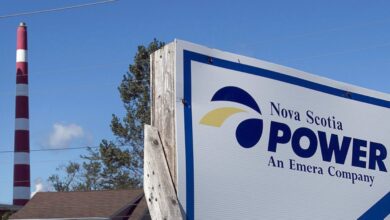Nova Scotia replacing its firefighting helicopters with new models
The provincial government announced Friday that it is using federal funding to help replace its fleet of Department of Natural Resources and Renewables helicopters.
The four choppers currently in use were purchased for a total of about $16 million in 2017 and 2018, to replace five in use up to that year. At the time, the province said the maintenance costs would be lower and the new fleet should last 25 years before it had to be replaced.
But Natural Resources and Renewables Minister Tony Rushton said Friday that while the choppers have served the department well for wildfires, search and rescue and other uses, “but as the hours of use and the years of service go up, the time they are down for maintenance is longer and more costly. When you look at the cost of that versus implementing a new fleet and the value of trade in, we believe this is better bang for the buck for residents.”
The new choppers are expected to be similar to what’s in use now, but with newer technology and water-carrying capacity, Rushton said. The final price for the new aircraft won’t be known until after the new ones are purchased and the old ones either traded in or sold. The replacement will happen over four years.
The federal-provincial agreement on wildfire equipment and training is in place from 2022-27, with each level of government contributing $12.8 million. That will cover the cost of the helicopters and other equipment and training.
The chopper assignments were split between the large, simultaneous fires in Shelburne County and Tantallon this past summer, and at times they were pulled off those blazes to check new outbreaks. Rushton said there is no talk right now about increasing the number of choppers in service.
“There is still the conversation and debriefing going on from the 2023 wildfire season, and conversations about fixed-wing aircraft,” he said. “We brought in fixed-wings to assist with a few fires in recent years, so those conversations are still going on. But this conversation about the helicopter water bombers would have taken place no matter what.”
Rushton said the other money in the agreement can be used for equipment, training, hoses, communications gear or other items. How it may be used will be dependent at least partially on the results of the debriefing from the fires this past year.
Helicopters can scoop and dump water faster than fixed-wing aircraft and can pick up from Nova Scotia’s many smaller water bodies. Some fixed-wing aircraft need to land to reload, and others can only scoop from a large lake or the ocean.
The choppers can also be used for transportation of people and equipment during emergencies and for aerial surveillance to help other government departments.
No date has been set for the release of the after-action report for the 2023 wildfires.



